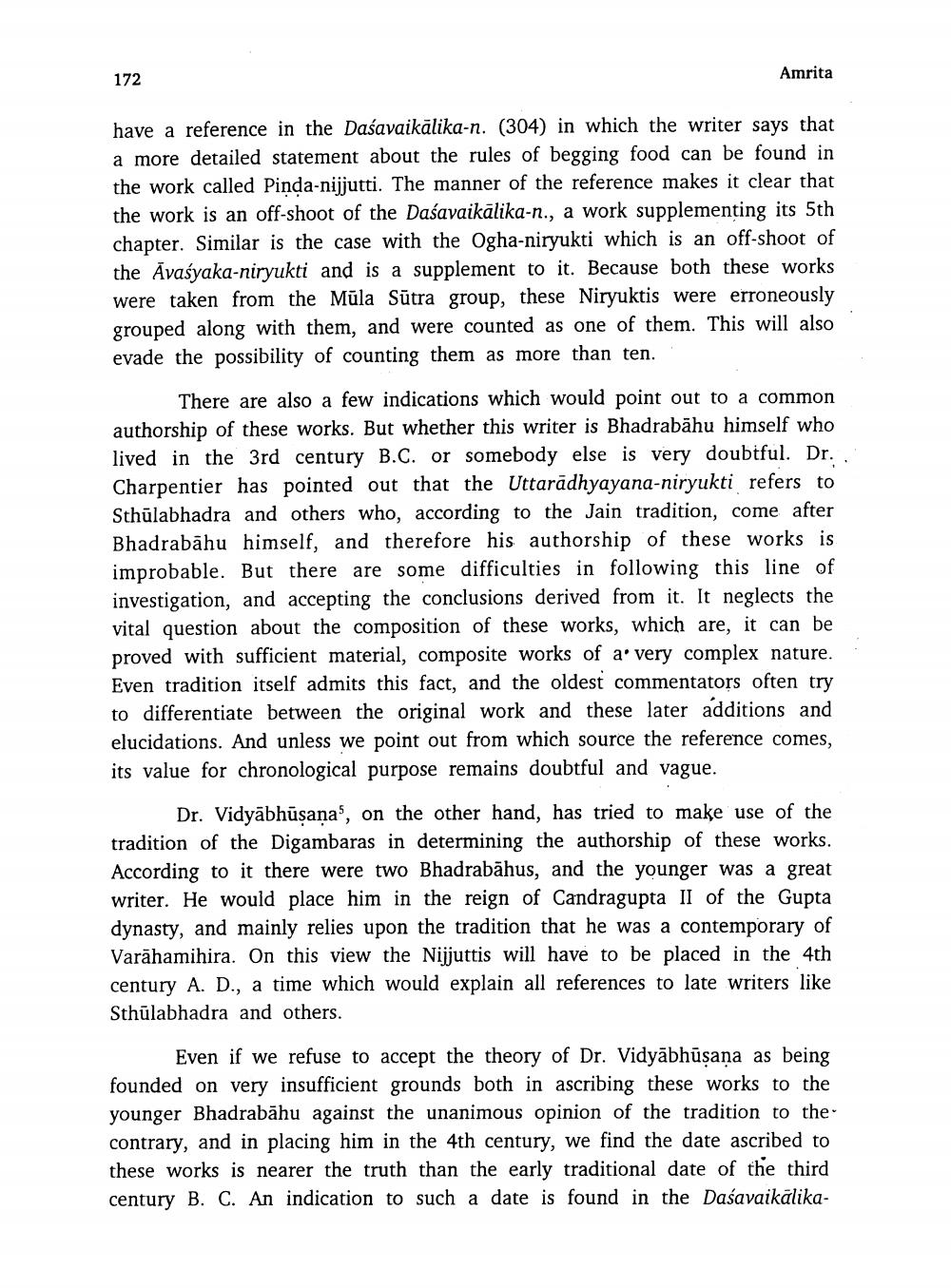________________
172
Amrita
have a reference in the Daśavaikālika-n. (304) in which the writer says that a more detailed statement about the rules of begging food can be found in the work called Pinda-nijjutti. The manner of the reference makes it clear that the work is an off-shoot of the Daśavaikālika-n., a work supplementing its 5th chapter. Similar is the case with the Ogha-niryukti which is an off-shoot of the Avaśyaka-niryukti and is a supplement to it. Because both these works were taken from the Mūla Sūtra group, these Niryuktis were erroneously grouped along with them, and were counted as one of them. This wil evade the possibility of counting them as more than ten.
There are also a few indications which would point out to a common authorship of these works. But whether this writer is Bhadrabāhu himself who lived in the 3rd century B.C. or somebody else is very doubtful. Dr. Charpentier has pointed out that the Uttaradhyayana-niryukti refers to Sthūlabhadra and others who, according to the Jain tradition, come after Bhadrabāhu himself, and therefore his authorship of these works is improbable. But there are some difficulties in following this line of investigation, and accepting the conclusions derived from it. It neglects the vital question about the composition of these works, which are, it can be proved with sufficient material, composite works of a very complex nature. Even tradition itself admits this fact, and the oldest commentators often try to differentiate between the original work and these later additions and elucidations. And unless we point out from which source the reference comes, its value for chronological purpose remains doubtful and vague.
Dr. Vidyābhūsana, on the other hand, has tried to make use of the tradition of the Digambaras in determining the authorship of these works. According to it there were two Bhadrabāhus, and the younger was a great writer. He would place him in the reign of Candragupta II of the Gupta dynasty, and mainly relies upon the tradition that he was a contemporary of Varāhamihira. On this view the Nijjuttis will have to be placed in the 4th century A. D., a time which would explain all references to late writers like Sthūlabhadra and others.
Even if we refuse to accept the theory of Dr. Vidyābhūsana as being founded on very insufficient grounds both in ascribing these works to the younger Bhadrabāhu against the unanimous opinion of the tradition to the contrary, and in placing him in the 4th century, we find the date ascribed to these works is nearer the truth than the early traditional date of the third century B. C. An indication to such a date is found in the Daśavaikālika




